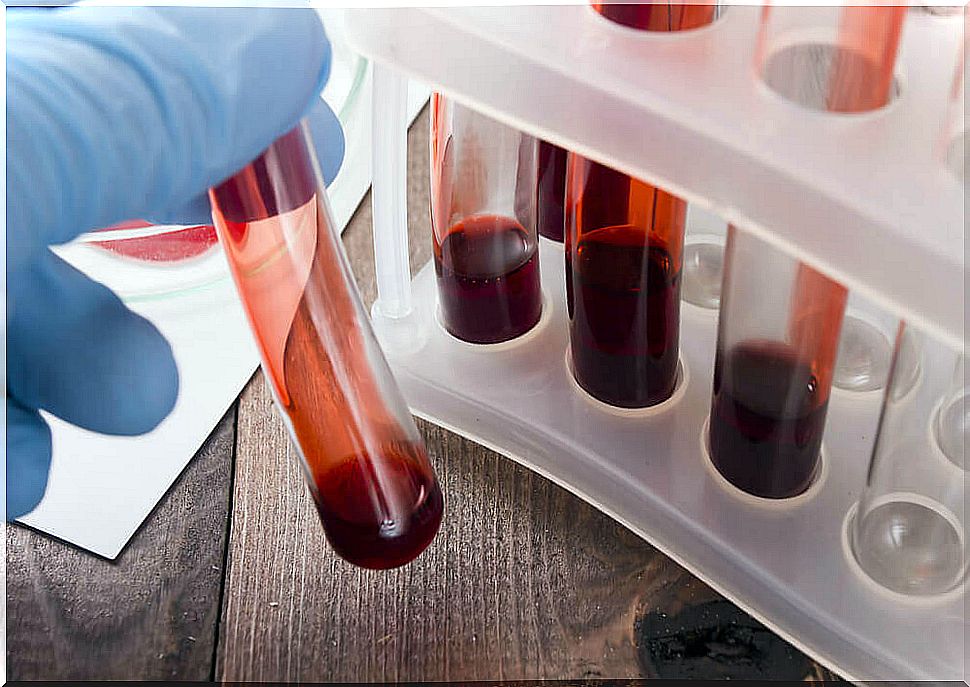What Is Megaloblastic Anemia?
Megaloblastic anemia is a disorder characterized by larger red blood cells compared to normal ones. Red blood cells are essential for optimal oxygen transport to every part of the body.
It is also called macrocytic anemia, and according to Stanford Children’s Health , it also occurs when blood cells do not develop properly or are abnormally shaped. What are your causes? How to recognize it?
Causes of megaloblastic anemia
The cause of this anemia is not 100% established. However, there are several factors that can affect its development. The most common is vitamin B12 (also called cobalamin) or folate deficiency (also called folic acid).
The lack of vitamin B12 or folates can be due to low intake through the diet, as we will see later. On other occasions, this deficit will have its origin in an associated condition that predisposes to one or more vitamin deficiencies. Examples of them are the following:
- Gastrectomy
- Bariatric surgery.
- Crohn’s disease.
- Celiac Disease.
- Pancreatic insufficiency.
- Gastric atrophy associated with aging.
- Autoimmune diseases (thyroid disease, vitiligo, pernicious anemia).
- Copper deficiency
- Use of drugs that interfere with red blood cell DNA synthesis.
- Certain genetic mutations.

Food sources of vitamin B12 (cobalamin)
- Food of animal origin: meat, fish, dairy products.
Food sources of folates
- Most foods contain some folate.
- We found a higher concentration in foods such as liver, green vegetables (spinach), yeast, and grains.
- Cooking lowers the amount of folate in foods.
What is the role of vitamin B12 and folates?
Both vitamins are necessary for the proper functioning of the enzymatic reactions that occur inside red blood cells, white blood cells and platelets.
Its deficiency, either due to a poor diet, or for another reason, will cause a defect in the synthesis of DNA (deoxyribonucleic acid), inside the red blood cells, which will be responsible for producing larger or megaloblastic cells.
What symptoms does megaloblastic anemia cause?
It is normal to find laboratory values that indicate the presence of anemia, along with other characteristics in the laboratory parameters, which will make one suspect megaloblastic anemia.
Its main clinical manifestations include those discussed below:
- Vigorous heartbeat
- Intense peripheral pulse.
- Heart murmur
- Fatigue.
- Irritability.
- Dizziness
- Difficulty breathing.
- Pale skin and mucous membranes.
- Glossitis or inflammation of the tongue.
- Oral ulcers.
- Commissural cheilosis or inflammation of the corner of the lips.
- Insomnia.
- Jaundice or yellowing of skin and mucous membranes.
- Hyperpigmentation of the skin.
- Low-grade fever in cases of severe anemia, with a temperature of 37.5 ° C.
- Variable neurological abnormalities, most prominent in vitamin B12 deficiency (cognitive delay and neuropathy, paresthesias, numbness, and gait problems).
- Neuropsychiatric manifestations.
On the other hand, changes can also be found in the blood count that is carried out in the laboratory. In general, the alterations include the following:
- Red blood cells decreased in quantity.
- Low hemoglobin.
- Low hematocrit.
- MCV (mean corpuscular volume), refers to the size of the red blood cell, in this case it will be greater than normal.
- White blood cells and low platelets.
- Low vitamin B12 and folate levels.

It is worth mentioning that, in some cases, there will be a predisposition to complications, such as the following:
- Infections, especially of the respiratory and urinary system.
- Hematomas on the skin.
- Sterility, both in men and women.
- During pregnancy, it can present prematurity in newborns, miscarriages and fetal malformations (anencephaly, myelomeningocele, encephalocele, spina bifida, cleft lip and palate).
Prevention of fetal malformations
Due to the risks that this condition causes during pregnancy, pregnant women, or those who want to be pregnant, are forced to consume supplements to obtain optimal doses of folates and vitamin B12. This supplementation lasts until the 12th week of pregnancy.
In addition, it is likely that the doctor will suggest more special controls in pregnant women diagnosed with this type of anemia. The objective, in general, will be to avoid complications, especially for the health of the fetus.
Treatment of megaloblastic anemia
It will depend on the determination of the cause of megaloblastic anemia. For example, if it is due to a diet with low intakes of vitamin B12 or folates, as in the case of strict vegetarians, malnourished or people who do not have a varied diet, they will seek to improve the diet, or supplement it with the missing vitamins .
To avoid megaloblastic anemia, it is necessary to eat a balanced and varied diet. Therefore, in cases where you want to follow a vegetarian diet, or any of its variants, it is advisable to consult a nutritionist doctor.
Meanwhile, during pregnancy and in the event that it is associated with causes other than dietary ones, it will be important to consult the corresponding specialist. From the diagnosis, the doctor will determine if drugs or other therapeutic options are necessary.









